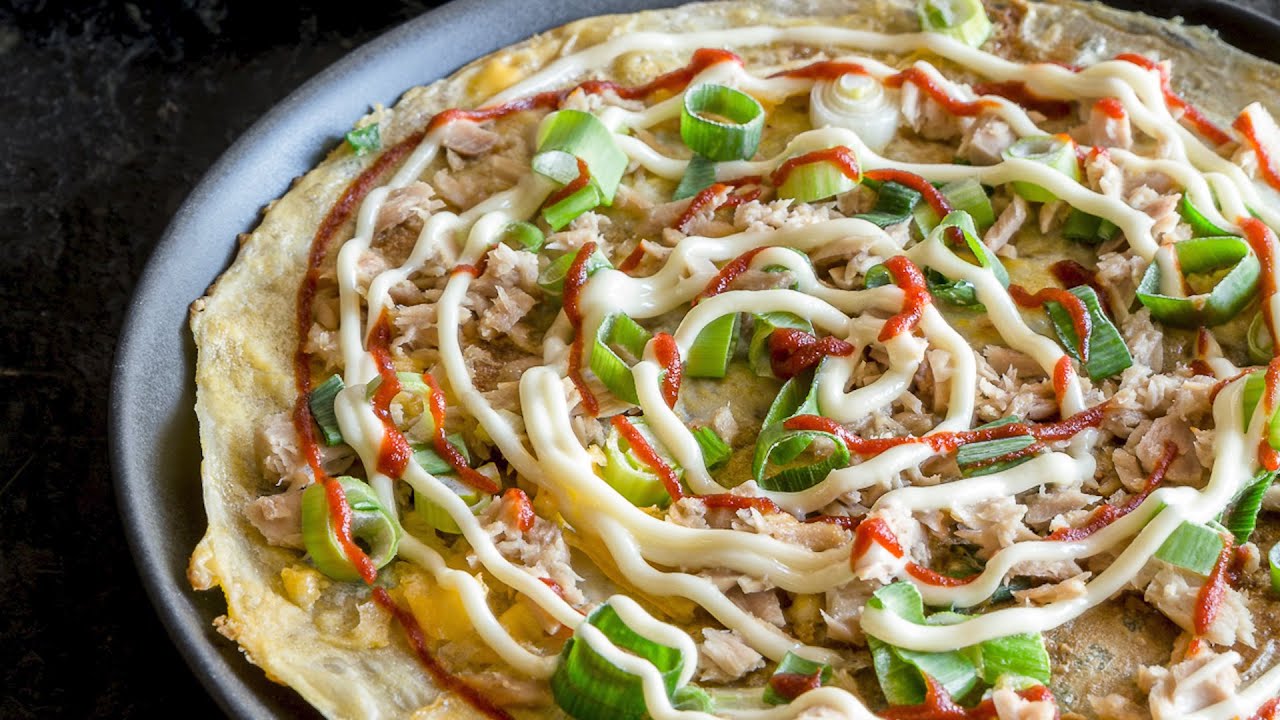What is ươmen? All You Need To Know
Discover the rich and enticing world of ươmen, a traditional Vietnamese noodle soup that promises an explosion of flavors to delight your taste buds. Crafted from either chicken or beef broth and complemented by rice noodles, this dish is adorned with a medley of fresh herbs, bean sprouts, and your preferred choice of meat. While the ingredients are humble, the amalgamation creates a simply delightful culinary experience. Whether enjoyed at any time of the day, ươmen epitomizes comfort in a bowl, and after that initial spoonful, you’ll find yourself captivated.
Dive into the details of this iconic Vietnamese creation, exploring everything from the savory broth to the tantalizing toppings, and learn the art of savoring a bowl of ươmen. By the end, your palate will crave the steaming allure, prompting you to seek out the nearest spot for your own piping hot bowl.
Table of Contents
What Is Ướmẽn?
Ướmạn, commonly known as Vietnamese pizza, is a well-loved street food in Vietnam. It comprises a flatbread made from rice flour, generously adorned with toppings like meat, eggs, and vibrant fresh vegetables.
The Crust
The ươmạn crust is crafted from a thinly rolled-out rice flour dough, cooked on a hot griddle until achieving a light browning. Infused with rice flour, the crust boasts a gentle chewiness and nuanced nutty flavor.
The Toppings
A diverse array of delightful toppings elevates the flavor profile of ươmạn. Popular choices encompass:
1. Ground pork or beef: Finely minced and seasoned with a blend of garlic, fish sauce, sugar, and black pepper.
2. Shredded chicken or duck: Gently poached and finely shredded, seasoned in a manner akin to the ground meats.
3. Eggs: Whisked and poured over the crust during cooking, creating a texture reminiscent of an omelet.
4. Fresh vegetables: Bean sprouts, cucumbers, cilantro, lime, chili peppers, and more, imparting a burst of freshness, crunch, and spice.
5. Hoisin or chili sauce: Either brushed on or served alongside for an additional burst of flavor.
How to Eat It
Enjoying ươmạn is a hands-on experience. Tear off portions of the crust and employ them as a vessel to scoop up the delectable toppings. The harmonious blend of flavors and textures, ranging from the crispness of the crust to the freshness of the veggies and the richness of the meat and eggs, creates a truly delightful bite. It’s no surprise that ươmạn has seamlessly woven itself into the fabric of Vietnam’s lively street food culture.
The History and Origins of Ướmẽn
The history of ươmẽn traces back centuries in Vietnam, and this well-received noodle soup is thought to have its beginnings in the Imperial City of Huế, the former capital situated in central Vietnam.
Royal roots
Legend has it that ươmẽn had its inception in the royal palaces of the Nguyễn Dynasty during the 1800s. In an era where culinary innovation flourished, royal chefs engaged in creative experiments with various broths and spices to craft novel dishes for the king and his court. Among these experiments emerged ươmẽn, a product of a fragrant beef and chicken broth infused with aromatic spices such as cinnamon, star anise, and clove. Thus, the iconic ươmẽn was brought into existence.
Gaining popularity
As time passed, the once-exclusive royal delicacy transitioned from palace kitchens to the bustling streets, establishing ươmẽn as a popular dish throughout Huế. Its aromatic broth, tender rice noodles, accompanied by fresh herbs, lime, and chili peppers, enchanted both locals and visitors. Presently, Huế retains its status as the ươmẽn capital of Vietnam, even as the dish has achieved widespread popularity and recognition across the nation.
A cultural icon
Beyond its delectable taste, ươmẽn has transcended into a significant facet of Vietnam’s rich culture and history. Consuming a bowl of ươmẽn is an immersive sensory journey, encompassing the alluring fragrance of the broth and the diverse interplay of flavors and textures with each mouthful. For many Vietnamese individuals, ươmẽn elicits sentiments of nostalgia, family bonds, and a deep connection to their cultural heritage. Whether you’re in Huế, Hanoi, or Ho Chi Minh City, locals and tourists alike partake in the pleasure of relishing this emblematic Vietnamese street food.
Key Aspects and Beliefs of the Ướmẽn Faith
The Ướmẇn faith has several key aspects and beliefs central to the religion.
Life and Afterlife
Adherents of Ướmẹn hold the belief in the continuity of life beyond death. According to this philosophy, the soul is everlasting and undergoes rebirth into a new body after death. The conduct exhibited in the present life shapes the destiny of the soul in subsequent lives. Through adherence to the principles of Ướmẹn and leading a morally upright existence, individuals aspire to attain an elevated state of being during the cycle of rebirth.
Harmony and Balance
Central to the teachings of Ướmẹn is the principle of maintaining harmony and equilibrium in all aspects of life. Devotees actively pursue a life in sync with the universe, nature, and their community. They advocate for a balance between the spiritual and physical dimensions, as well as between work and leisure, tradition and progress. Attaining this comprehensive equilibrium is considered a pivotal step towards enlightenment and inner peace.
Community and Responsibility
Ướmẹn imparts the wisdom that an interconnectedness exists among all individuals, fostering a shared responsibility towards one another. Followers acknowledge a duty to their families, communities, and society at large. Embracing the values of generosity, both with time and resources, and extending aid to the less fortunate are integral aspects of their beliefs. Collaboration for the collective welfare is valued, and the treatment of others is viewed as a mirror reflecting one’s spiritual evolution.
Meditation and Contemplation
In the Ướmẹn faith, the practices of reflection and meditation carry significant importance. Followers turn to meditation as a means to delve into life’s profound questions, strengthen their connection with the divine, and attain inner tranquility. The contemplation of Ướmẹn teachings, coupled with thoughtful reflection on one’s thoughts and actions, is viewed as a transformative journey towards wisdom and enlightenment.
In essence, the Ướmẹn way of life is shaped by core principles including harmony, balance, community, and contemplation. By integrating these teachings into their daily lives, followers believe they can attain peace both in this world and the next.
Celebrations and Rituals of the Ướmẽn People
The Ướmẽn community engages in numerous significant celebrations and rituals throughout the year, richly imbued with cultural traditions. These events serve as occasions for families and communities to unite, paying homage to their heritage.
Harvest Festival
The primary yearly celebration is the Harvest Festival, taking place at the conclusion of the wet season every autumn. During this event, villages unite to rejoice in the bountiful harvest and express gratitude for a fruitful growing season. Festivities include feasts, dancing, and ceremonies aimed at securing ongoing prosperity. Offerings of crops, livestock, and currency are presented to the deities and spirits safeguarding the land and its inhabitants.
Coming of Age Ritual
Upon reaching maturity, the Ướmằn youth undergo an intricate coming-of-age ritual. Young men and women are required to demonstrate their survival skills in the jungle, showcasing their ability to build shelter, make fire, and hunt for food. The culmination of this rite involves body scarification and tattoos, symbolizing the significant transition to adulthood.
Ancestor Veneration
Honoring ancestors holds significant importance in the spiritual life of the Ướmằn people. Within homes, shrines dedicated to deceased family members are maintained, and regular offerings of food, drink, and incense are presented as gestures of respect. The Ướmằn hold the belief that even after death, ancestors continue to be integral parts of the family, with the ability to influence the fortunes and events in the lives of their descendants.
Music and Dance
Music, song, and dance play a central role in all Ướmằn rituals and social gatherings. Traditional instruments such as the khen (mouth organ), khèn (conch shell trumpet), and trống (drum) accompany traditional dances that commemorate nature, fertility, war, and various facets of life. Through dance and music, the Ướmằn people uphold cultural traditions, seek good fortune, and establish connections with spiritual forces.
The rituals and celebrations of the Ướmằn community underscore their profound cultural and spiritual ties to nature, community, and ancestors. These events serve as a unifying force across generations, ensuring the continued preservation of their distinctive cultural heritage.
Where Ướmẽn Is Practiced Today
Today, the practice of ươmen persists in various countries across Southeast Asia, although its prevalence is not as widespread as in earlier times. You can still encounter ươmen in several places, including:
Vietnam
In Vietnam, ươmen, originally a folk remedy, has evolved in recent years to gain popularity as a spa treatment. Numerous upscale spas, particularly in major cities such as Hanoi and Ho Chi Minh City, now provide ươmen massages and herbal therapies. Even in smaller towns and villages, one can still encounter ươmen practitioners, known as thầy thuốc nam.
Thailand
The practice of ươmen originated in Vietnam and later found its way to Thailand, where it underwent adaptation to fit Thai culture. In Thailand, it is referred to as นวดแผนโบราณ or traditional Thai massage. Similar to its historical use in Vietnam as a medical treatment, ươmen has evolved into a popular spa therapy in contemporary times. Numerous spas, particularly in tourist hubs like Bangkok and Chiang Mai, now offer traditional Thai massage services.
Cambodia
In Cambodia, ươmen is identified as kru khmer or traditional Khmer medicine. Similar to its origins in Vietnam and Thailand, ươmen was initially employed as a folk remedy but has now transitioned primarily into a wellness and spa treatment, with a focus on catering to tourists. Practitioners of ươmen, referred to as kru khmer, can be located at Buddhist temples, spas, and wellness centers across Cambodia.
Other Countries
The influence of ươmen has extended to other Southeast Asian nations, including Laos, where it is recognized as traditional Lao massage. In Singapore and Malaysia, treatments inspired by ươmen are widely favored at numerous spas and wellness centers. Despite its origins in Vietnam, ươmen has left a lasting impact across Southeast Asia.
Conclusion
There you have it – all you need to know about ươmen. This traditional Vietnamese dish presents a harmonious blend of flavors, textures, and aromas that stand out uniquely. The next time you seek a thrilling culinary experience or aim to impress friends with an exotic recipe, consider trying ươmen. Each savory bite will transport you to the vibrant streets of Vietnam.
If you can’t find the ingredients to prepare it yourself, explore your local Asian grocery store or Vietnamese restaurant – they’re likely to have a delectable bowl of ươmen waiting for you. So, what are you waiting for? Dive in and relish this delightful taste of Vietnam!






